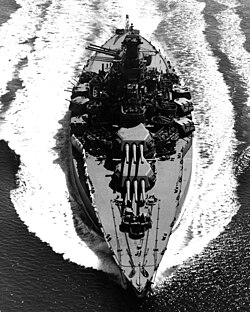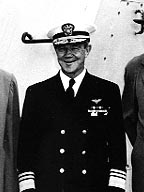- For the Battle of Leyte Gulf, see Leyte Gulf order of battle
On 17 October 1944, troops of the United States Sixth Army under the direct command of Lieutenant General Walter Krueger, invaded the Philippine island of Leyte. This operation was the beginning of General Douglas MacArthur's fulfillment of his promise in March 1942 to the Filipino people that he would liberate them from Japanese rule.
Contents
- US Seventh Fleet
- Combat Units
- Amphibious Assault Units
- Service and Support Units
- US Third Fleet
- Fast Carrier Force (Task Force 38)
- Notes
- References
- Bibliography
MacArthur's formal title was Supreme Commander, Allied Forces, Southwest Pacific Area. The amphibious landings were carried out and supported by the United States Seventh Fleet , including 1 British and 11 Australian ships, under the direction of Vice Admiral Thomas C. Kinkaid .
![]() Seventh Fleet
Seventh Fleet
- Combat ships: 18 escort carriers, 6 old battleships, 5 heavy cruisers, [a] 4 light cruisers, 34 destroyers, [b] 17 destroyer escorts
- 280+ amphibious landing and support ships [c]
- 110+ auxiliaries [d]
In case the Imperial Japanese Navy interfered, additional air cover was provided by the fast carriers of the US Third Fleet under the command of Admiral William F. Halsey, Jr. .![]() Third Fleet
Third Fleet
- 9 fleet carriers, 8 light carriers, 6 fast battleships, 3 heavy cruisers, 7 light cruisers, 3 anti-aircraft light cruisers, 58 destroyers





















































